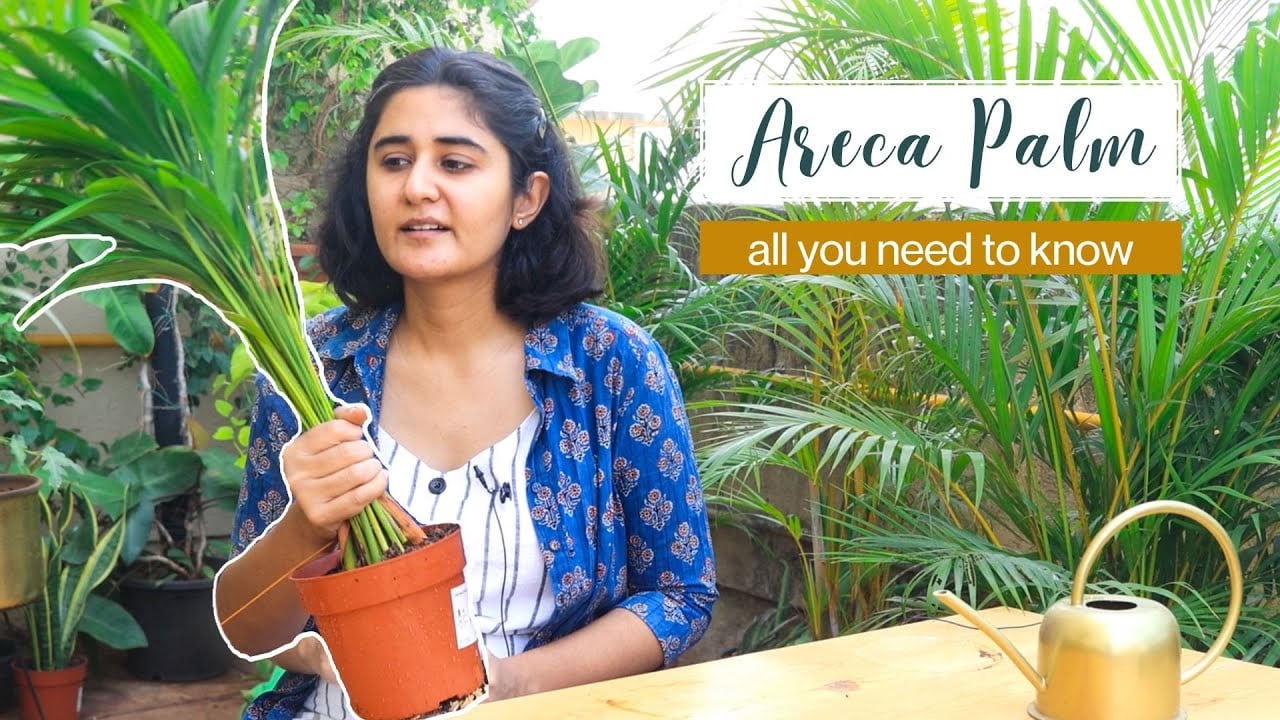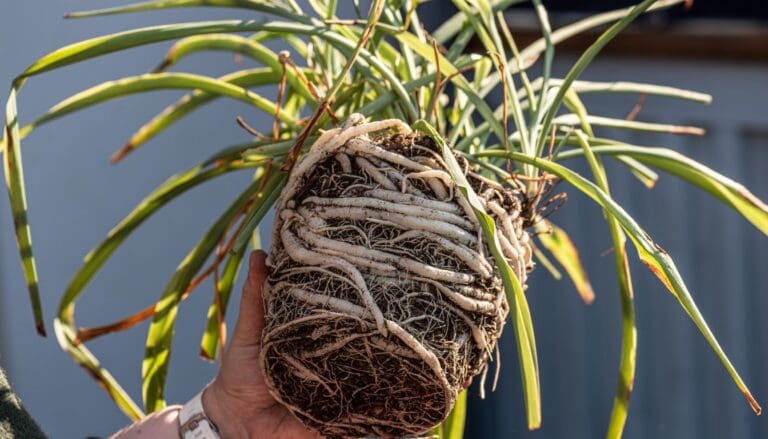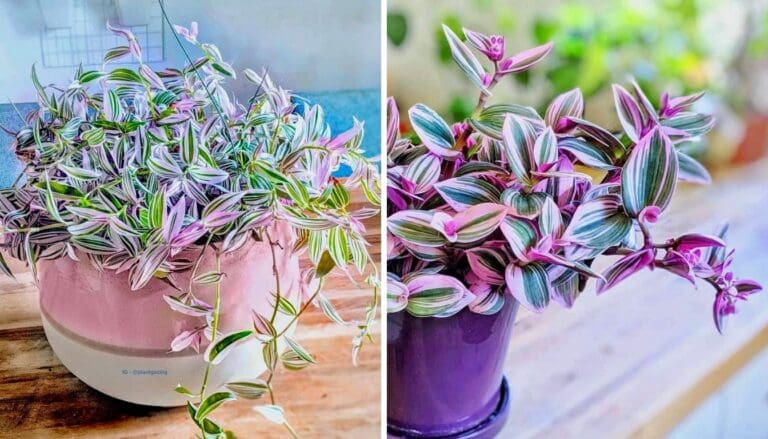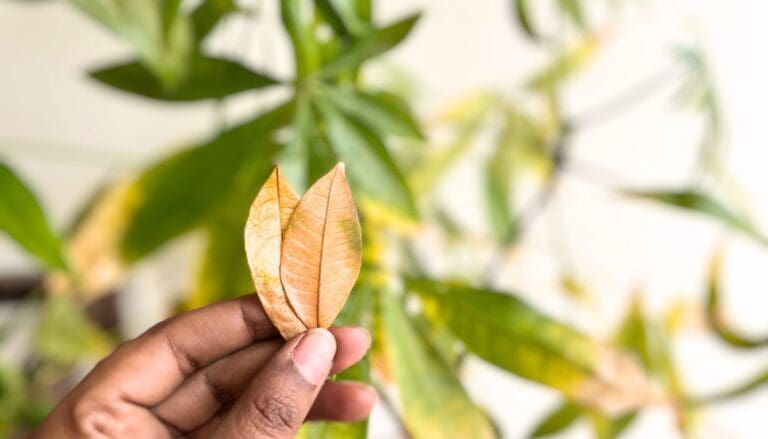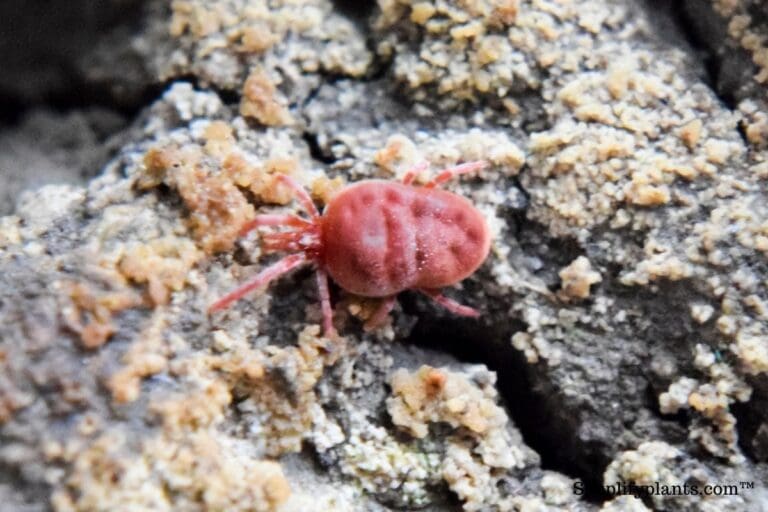Areca Palm Care Guide: Effortless Tips for a Healthy Plant!
Areca palms, often referred to as butterfly palms, are a lush, tropical addition to any indoor space. I love how they bring a touch of greenery and a splash of vacation vibes right into my living room! They’re not just pretty faces; they also act as natural air purifiers. 🌿
Who wouldn’t want a breath of fresh air, especially when it’s coming from such a gorgeous plant?
Planting my Areca palm was a breeze. Choosing a bright spot in my home where the sunlight is like a gentle hug was crucial.
I made sure the soil was like a cozy bed: well-draining and slightly acidic.
Oh, and water? Picture giving your plant a nice, refreshing drink whenever the topsoil feels like a dry summer day.
It’s like the palm’s personal spa day, and let’s be honest, who doesn’t love a spa day? 💧
So, how about you? Have you ever thought about getting an Areca palm to brighten up your space? Share your experiences or plans in the comments; I’d love to hear them! 🌴✨

Please note: Simplify Plants is reader-supported. Some links in the post are affiliate links and I get a commission from purchases made through links in the post.
Understanding Areca Palms
When I think of giving a room a tropical makeover, my go-to choice is the Areca Palm. Its lush, feathery fronds just scream ‘island vibes,’ don’t they? 🌴 So, let’s dive into the world of these beautiful palms!
Origin and Botanical Facts
My dear Areca Palms come from the warm embrace of Madagascar. In their homeland, they flourish under the sun, as all queens should.
Botanically speaking, these elegant plants are known as Dypsis lutescens. They’re part of the Arecaceae family, which might sound like a distant cousin of royalty, right?
These palms can grow tall and grand outdoors, reaching up to 30 feet. Talk about living the high life!
Did You Know? The Areca Palm is also known by another name, the Butterfly Palm—because of the way its fronds sway gracefully in the breeze. Isn’t that just poetic?
Common Varieties
Now, I hate to break it to you, but the Areca Palm doesn’t have a ton of varieties strutting around. However, various sizes from tabletop Arecas to full-grown trees are available, so they can fit in any spot of your home!
Tall, short, medium—they’re like the customizable characters of the plant world.
Whether you place them by your sunny window or in that awkward empty corner, they’ll transform the space completely.
Remember, choosing the right size for your room is key, so think about it—where would your perfect Areca Palm go? Share your thoughts in the comments; I’m all ears! 🌿😊
Ideal Growing Conditions
When I think of a little green tropical flair for my home, I instantly picture an Areca Palm. I’ve learned that these beauties thrive when given just the right touch of sunlight, humidity, and soil love. Let me share the scoop on keeping these fronds happy!
Sunlight Requirements
Areca Palms are my sun-loving friends, but they don’t like to get sunburnt—who does, right?
They need a spot that offers bright, indirect sunlight, a bit like that perfect sunny spot on the porch where you can read without squinting.
Too much direct sun can scorch their leaves, turning a chill lounge into a sad, crispy situation. 🌞
Temperature and Humidity
Imagine you’re on a vacation in the tropics; that’s the vibe Areca Palms are into.
Aim for a warm room (think 65-75°F or 18-24°C) with moderate to high humidity.
If your home’s as dry as a good joke, consider adding a humidifier to boost the moisture, or maybe a bathroom spa day—Arecas included! 💦
Soil Preferences
What’s an Areca Palm’s room service request? Soil that’s like a fluffy hotel pillow—well-draining and slightly acidic.
Get yourself a special palm potting mix to make sure they’re lounging in comfort.
Remember to water when the soil just starts to whisper “I’m thirsty!”—it’s all about the right sip, not a swim. 🌱
Planting and Repotting

When I talk about getting an Areca palm off to a good start, it’s all about choosing the right pot and nailing those repotting steps. Trust me, a happy palm makes for a happy plant parent!
Choosing the Right Pot
First off, we need a pot that’s just like Goldilocks’ porridge—just right!
Your Areca palm loves room to grow but hates drowning in soil. Ensure the pot is slightly larger than the root ball and has drainage holes. Can’t stress this enough! 🌿
- Material: Go for clay or terracotta—they’re breathable and help avoid overwatering.
- Size: Aim for 1-2 inches larger in diameter than the current pot.
Repotting Steps
Now onto the main event—repotting! 🌟
- Prep the New Home: Fill the bottom of the new pot with a well-draining, slightly acidic soil mix.
- Gentle Uproot: Carefully remove the palm from its current pot, being mindful not to damage the roots.
- Settle In: Place the palm in the center of the new pot and fill in around the roots with more soil.
- Water Wisely: Give it a good drink to help it settle, but don’t go overboard.
Got any tales of your Areca palm adventures? Drop a comment and let’s trade tips! 🌴💬
Watering Your Areca Palm
Before diving into the nitty-gritty of keeping your Areca palm perfectly quenched, remember that getting the watering right is like finding the sweet spot in a cozy hammock – it’s all about balance. Not too little, not too much!
Watering Frequency
When it comes to watering me, timing is everything. I don’t like soggy feet!
You should check my soil every few days, and when the top inch feels dry to the touch, it’s time to give me a drink.
Typically, this might be once a week, but keep in mind, I drink less in the winter months.
- How often to water:
- Spring through Summer: Every 5-7 days
- Fall through Winter: Every 10-14 days
Isn’t it fun picturing your Areca palm with a tiny umbrella, soaking up the right amount of water? ☂️💦
Tips for Proper Hydration
Getting my hydration right can be a bit tricky, but don’t worry, you’ve got this!
Use room temperature water, and make sure to water around the base of my trunk evenly. This helps distribute moisture and keeps me happy 😊.
If your local tap water is hard, consider using filtered water to prevent build-up of salts in my soil that can turn my tips brown.
- Hydration tips:
- Water evenly around the plant base
- Use room temperature water
- Filtered water is best for hard water areas
Have you checked on your Areca palm today? I bet it’s thirsty for your attention (and some water)! Let’s keep the palm party going – share your watering wins in the comments. Have any secret tips? I’m all ears! 🌴💬
Feeding and Fertilization

I’m here to give you the lowdown on feeding your Areca palm to keep it lush and happy. Let’s get right into it!
Types of Fertilizers
When choosing a fertilizer, it’s like picking a favorite snack for your plant – you want it to be yummy and nutritious!
Go for balanced, water-soluble fertilizers with equal parts nitrogen, phosphorus, and potassium (look for an N-P-K ratio like 20-20-20).
Remember, Areca palms aren’t fans of chlorine or other chemicals, so let’s keep it as natural as possible.
Organic options are like homemade meals – they’re a big hit!
Fertilization Schedule
Timing is everything, isn’t it? Your Areca palm’s diet should follow the seasons.
It’s all about feeding it during the growing season, which is spring and summer.
During these months, aim to fertilize once a month. But here’s the catch – come winter, your Areca palm is basically on a diet, as it enters dormancy.
So, let’s not overfeed our green friends during those chilly months. It’s their time to relax, not feast!
Pruning and Maintenance
I’ve come to realize that knowing how to prune and maintain my Areca palm is a game-changer for its health and appearance. Here’s a quick rundown on keeping these leafy friends in tip-top shape!
Pruning Techniques
You might wonder, why prune your Areca palm at all? Well, just like getting a haircut helps you look neat, pruning helps the Areca palm maintain its form and vigor. Here’s how I make the cut:
- Identify Dead or Dying Fronds: These are typically brown, yellow, or wilting.
- Use Clean, Sharp Shears: This ensures a clean cut and avoids damage.
- Cut Close to the Trunk: But not too close – leave about an inch to avoid harming the main stem.
- Avoid Over-Pruning: Keep the natural shape of the palm in mind. I just prune enough to keep it tidy, not to reshape it completely.
Remember, pruning isn’t just about taking away — it’s about encouraging new growth. 😉
Cleaning the Leaves
Let me tell you, friends, the leaves of your Areca palm can collect dust faster than a white couch at a dust bunny convention 🐰. But keeping them clean is not just for show; it allows the plant to photosynthesize more efficiently. Here’s my go-to method:
- Gentle Wipe-Down: I use a soft, damp cloth and gently wipe each leaf.
- Shower Time: Occasionally, I give my palm a tepid shower. Just make sure to let it dry out well afterward.
No leaf blower required! Trust me, your palm will thank you with a fresh, vibrant look.
Pest and Disease Management

Keeping your Areca Palm thriving means being a bit of a plant detective—you’ve got to keep an eye out for the uninvited guests (pesky pests) and make sure your plant doesn’t end up with the sniffles (ugh, diseases).
Common Pests
Let’s meet the usual suspects that love to crash the Areca Palm party:
- Spider Mites: Tiny critters that create fine webs and can cause leaves to yellow. 💦 Pro Tip: Keep humidity high to deter them!
- Scale Insects: These little shielded bugs suck the sap and zest out of your palm. 🧴 DIY Hack: A dab of soapy water can help bid them farewell.
- Mealybugs: Fluffy white pests that are definitely not as cute as they sound. 🌬️ Quick Fix: Blast them away with a spray of water or use a cotton swab dipped in alcohol.
- Whiteflies: Not the friendly snowflake kind, these will happily munch on your plant. 🍃 Natural Remedy: Introduce ladybugs, they’re like the superheroes of the garden!
Disease Prevention and Treatment
Disease in Areca Palms usually boils down to one culprit: too much H2O.
- Root Rot: When roots get more of a swim than they signed up for. 🏊♂️ Just Right Watering: Check soil moisture before watering—think moist, not soggy.
- Leaf Spot: Funky marks on leaves that scream “Help me!” 🛑 Stop it in its Tracks: Remove affected leaves and keep the foliage dry.
Propagation Methods
Have you ever noticed how your Areca Palm seems to add that tropical flair to your living space? 😍 Well, why not multiply that feeling?
Propagating Areca Palms is a breeze, and I’m excited to guide you through it!
Step 1: It all begins with seeds.
Grab some Areca Palm seeds and remember, you may get ones that are green or orange/brown – both are good to go!
Step 2: Let’s get dirty!
Plant your seeds in a well-draining potting mix. Make sure the soil is as lightly moist as a chocolate cake fresh out of the oven – yum!
Step 3: Patiently wait for the magic to happen. 🌱
Keep the soil lightly and consistently moist. Picture your seeds like tiny guests at a spa, needing that perfect balance of water and warmth without the soaking!
Step 4: Find a bright spot, but not too sunny—think of a bright beach umbrella keeping the harsh rays at bay.
Your little seeds will love temps between 70-85°F (21-29°C).
Troubleshooting Common Issues

I get it, we’ve all been there. Your Areca Palm looked picture-perfect, and suddenly you’re noticing some not-so-green changes. 🤔 Don’t worry! I’ve broken down these common issues into bite-sized tips.
Yellowing Leaves
Have you ever overindulged in watering your plant babies, thinking you’re doing them a favor? Turns out, overwatering is a common culprit for yellow leaves.
I always stick my finger into the soil up to the first knuckle; if it’s damp, I hold off on the watering. Remember, your Areca Palm isn’t thirsty for a flood! 💧
Brown Leaves
Now, imagine you’re all wrapped up in a chilly blanket. Brr! Your Areca Palm feels the same way with cold drafts.
Brown leaves could be a sign that your palm is too cold or that the air is too dry. Keep me away from those drafty windows in winter, okay?
Brown Tips
Eek, brown tips? This is often a sign of low humidity or chemical buildup from tap water.
I’m not a fan of dry air, so consider using distilled water or letting tap water sit out overnight. It’s like I’m at a spa with all that pampering! 💅
Stunted Growth
If I’m not growing as expected, it might be due to insufficient light or nutrient deficiencies.
Ensuring I have proper light is like finding the perfect spot at the beach, not too close to the water, not too far from the action. 🌞 And a balanced fertilizer every now and then is like giving me a delicious snack!
Areca Palm FAQs

Let’s talk about one of my favorites, the Areca Palm. I’ve received tons of questions about these beauties, so I’ve compiled some frequently asked questions to help you out.
How often should I water my Areca Palm?
– Water it when the top inch of the soil feels dry. Areca Palms prefer evenly moist soil—like a moist chocolate cake, yum! 🍰
Does it need special lighting?
– Your palm loves bright, indirect light. Think of it basking in the morning sun, without the harsh afternoon rays. 🌞
Can I grow an Areca Palm from seeds?
– It’s a challenge but definitely possible. Plant seeds in a warm, brightly-lit spot. Keep the soil moist, and be patient—these seeds take their sweet time to sprout. 🌱
Help! My palm’s fronds are turning brown. What’s up?
– Dry tips? It might be low humidity or a need for more water. If the entire frond is browning, it could be overwatering or not enough light. Let’s not give it a suntan, but maybe a little more light? 🕶️
Is the Areca Palm pet-friendly?
– Absolutely! It’s non-toxic, so your furry friends can safely do a photo bomb. 😺🐶
Conclusion
I just love how my Areca Palm brings that tropical vibe into my home, don’t you? 🌴 It’s like a mini vacation in a pot!
Here’s a quick recap on keeping these green beauties thriving:
- Light: Bright, indirect sunshine is their best friend!
- They’re not fans of the shade, nor do they like a sunburn. It’s all about that sweet spot. 🌞
- Water: Keep the soil like a moist sponge—not a swimming pool.
- Think of it just like Goldilocks, you know, not too wet and not too dry!
- Remember to let the topsoil dry a tad between waterings.💧
- Temperature: Keep it cozy between 65°F (18°C) and 75°F (24°C).
- Chilly drafts? No, thank you! Keep them snug and warm. 🌡️
- Growth: Patience is key, my friends!
- Seeds or division are the way to go because cuttings just don’t cut it with Areca Palms. 🌱
So, I’m curious, how many of you have talked to your Areca Palm today? Come on, plant chats are totally a thing! 🗣
Excited to see your green friends thrive? Share your top Areca Palm care tips or even a selfie with your frondy pal in the comments below!
Let’s get our green thumbs trending! 👍💚
Recommended Garden Supplies
| Product Image | Our Recommended Gardening Supplies | Check Offers! |
|---|---|---|
Top Top
Top
Top
Top
Top
Top
Top
Top | rePotme Houseplant and Tropical Classic Potting Soil Mix | Check Offer On Amazon |
 Top
Top
Top
Top
Top
Top
Top
Top | Espoma Organic Indoor Plant Food | Check Offer On Amazon |
 Top
Top
Top
Top
Top
Top
Top
Top | GooingTop LED Grow Light 6000K Full Spectrum Clip Plant Growing Lamp | Check Offer On Amazon |
 Top
Top
Top
Top
Top
Top
Top
Top | Soil Moisture Meter | Check Offer On Amazon |
 Top
Top
Top
Top
Top
Top
Top
Top | Govee Hygrometer Thermometer, Bluetooth Enabled! | Check Offer On Amazon |
 Top
Top | LEVOIT Humidifiers for Large Room(Best For Plants) | Check Offer On Amazon |
 Top
Top
Top
Top
Top
Top
Top
Top | Upgraded DIY Automatic Drip Irrigation Kit, 15 Potted Houseplants Support | Check Offer On Amazon |
 Top
Top
Top
Top
Top
Top
Top
Top | Stainless Steel Heavy Duty Gardening Tool Set | Check Offer On Amazon |
 Top
Top
Top
Top
Top
Top
Top
Top | Bonide Insecticidal Soap | Check Offer On Amazon |
 Top
Top
Top
Top
Top
Top
Top
Top | Bonide 32 oz Spray Neem Oil for Organic Gardening | Check Offer On Amazon |
 Top
Top
Top
Top
Top
Top
Top
Top | Garden Safe Fungicide | Check Offer On Amazon |

